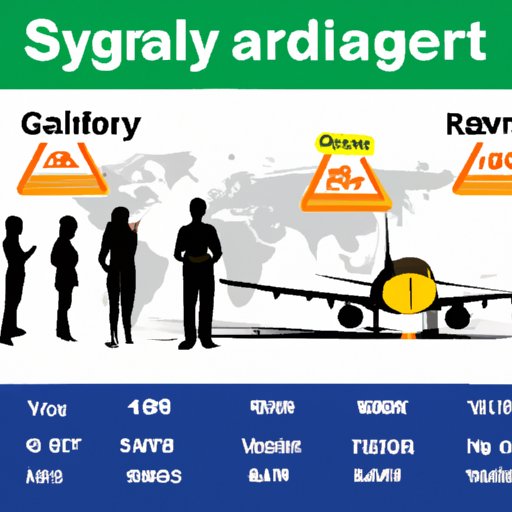How Safe Is Flying? Visualizing Airplane Accidents And Near Misses

Table of Contents
The Statistics of Air Travel Safety
Air travel boasts an incredibly impressive safety record, significantly safer than many other forms of transportation. Let's examine the data to understand this remarkable achievement.
Accident Rates: A Global Perspective
- Extremely Low Accident Rate: The number of fatal accidents per passenger mile flown is incredibly low compared to driving, train travel, or even bus travel. The International Air Transport Association (IATA) and the Federal Aviation Administration (FAA) regularly publish data showing this stark difference. For example, the fatality rate per billion passenger kilometers is significantly lower for air travel.
- Fatal vs. Non-Fatal Incidents: It's crucial to differentiate between fatal accidents, resulting in fatalities, and incidents or near misses, which don't result in loss of life. Near misses are valuable data points, helping to identify potential safety hazards and prevent future accidents. These "near misses" are carefully analyzed to improve safety protocols.
- A Decreasing Trend: Over the past several decades, the rate of air accidents has steadily decreased. This is a testament to the continuous improvement in aviation safety measures, technological advancements, and rigorous regulatory oversight. Charts depicting this downward trend clearly showcase the effectiveness of ongoing safety initiatives.
Types of Airplane Accidents
Accidents can be categorized into several types, each requiring different approaches to prevention.
- Pilot Error: Human error remains a significant factor in many aviation accidents. This includes pilot fatigue, poor decision-making, inadequate training, and communication failures among the flight crew.
- Mechanical Failure: Mechanical malfunctions, such as engine failure or structural issues, can contribute to accidents. Rigorous maintenance schedules and advanced diagnostic technologies play a critical role in mitigating these risks.
- Weather-Related Accidents: Adverse weather conditions, such as severe turbulence, icing, or low visibility, can significantly impact flight safety. Advanced weather forecasting and pilot training for challenging weather situations are crucial.
- Other Contributing Factors: Other factors can also contribute to accidents, including air traffic control errors, bird strikes, and acts of sabotage.
The Role of Technology in Enhancing Air Safety
Technological advancements have revolutionized aviation safety, making flying safer than ever before.
- Advanced Aircraft Design: Modern aircraft are designed with enhanced safety features, including improved structural integrity, redundant systems, and advanced materials.
- Flight Control Systems: Sophisticated flight control systems, including fly-by-wire technology, provide stability and assist pilots in various flight situations, preventing accidents.
- Collision Avoidance Systems (TCAS): TCAS systems use radar to detect and warn pilots of potential collisions with other aircraft, significantly reducing the risk of mid-air collisions.
- Ground-Based Radar Systems: Air traffic control uses advanced radar systems to monitor air traffic, manage aircraft separation, and prevent collisions.
- Predictive Maintenance: Data analysis and predictive maintenance help identify potential mechanical problems before they lead to incidents. This proactive approach is instrumental in preventing accidents.
Visualizing Airplane Accidents and Near Misses
Data visualization plays a crucial role in understanding aviation safety.
Data Visualization Techniques
- Maps: Geographical maps can visualize accident locations, highlighting regions with higher or lower accident rates, revealing potential patterns or contributing factors.
- Graphs & Charts: Line graphs effectively illustrate trends in accident rates over time, while bar charts compare accident types or causes.
- Interactive Dashboards: Online platforms and interactive dashboards provide real-time data on air traffic, weather conditions, and incident reports, allowing for comprehensive analysis.
Interpreting Visualizations
- Critical Evaluation: It is essential to critically evaluate the source of data and its methodology to avoid misinterpretations. Reputable sources such as IATA, FAA, and other aviation safety organizations provide reliable data.
- Identifying Patterns: Data visualization can help identify patterns and trends in aviation accidents. These patterns inform safety regulations, pilot training, and technological improvements.
Addressing Safety Concerns and Mitigation Strategies
Continuous improvement is essential for maintaining high aviation safety standards.
Regulatory Oversight and Safety Standards
- International & National Authorities: International Civil Aviation Organization (ICAO), FAA (USA), and EASA (Europe) set safety regulations, conduct audits, and enforce standards.
- Aircraft Inspections & Maintenance: Regular inspections and maintenance are crucial to ensuring aircraft airworthiness and preventing mechanical failures.
- Pilot Training & Licensing: Rigorous pilot training programs and strict licensing requirements are essential for ensuring pilots possess the necessary skills and knowledge.
Continuous Improvement in Aviation Safety
- Accident Investigations: Thorough investigations of aviation accidents are critical for identifying causes, implementing corrective actions, and preventing similar incidents.
- Safety Information Sharing: Sharing safety information and best practices among airlines and aviation authorities is crucial for continuous improvement.
- Ongoing Research & Development: Ongoing research and development in aviation technology and safety procedures constantly strive to improve safety standards.
Conclusion
Flying remains one of the safest modes of transportation. By understanding the statistics, visualizing the data, and recognizing the ongoing efforts to enhance safety measures, we can better appreciate the robust safety systems in place. While near misses and accidents do occur, their extremely low probability makes air travel remarkably safe. Continue to stay informed about aviation safety and rely on credible sources for accurate information regarding airplane accidents and near misses. Remember, understanding the data empowers you to make informed decisions about your travel.

Featured Posts
-
 Get Tickets For Bbc Radio 1 Big Weekend 2025 Full Lineup Details
May 24, 2025
Get Tickets For Bbc Radio 1 Big Weekend 2025 Full Lineup Details
May 24, 2025 -
 Londons Odd Burger To Expand To 7 Eleven Stores Across Canada
May 24, 2025
Londons Odd Burger To Expand To 7 Eleven Stores Across Canada
May 24, 2025 -
 Le Controle Chinois En France Les Dissidents Dans Le Viseur
May 24, 2025
Le Controle Chinois En France Les Dissidents Dans Le Viseur
May 24, 2025 -
 Dylan Farrows Woody Allen Accusations Sean Penns Skepticism
May 24, 2025
Dylan Farrows Woody Allen Accusations Sean Penns Skepticism
May 24, 2025 -
 Ranking The Top 10 Fastest Standard Production Ferraris On Their Home Track
May 24, 2025
Ranking The Top 10 Fastest Standard Production Ferraris On Their Home Track
May 24, 2025
Latest Posts
-
 Update Sheinelle Jones Absence From Today And Colleagues Statements
May 24, 2025
Update Sheinelle Jones Absence From Today And Colleagues Statements
May 24, 2025 -
 Today Shows Sheinelle Jones Absent Colleagues Address Her Absence
May 24, 2025
Today Shows Sheinelle Jones Absent Colleagues Address Her Absence
May 24, 2025 -
 Billie Jean King Cup Rybakina Propels Kazakhstan To Finals
May 24, 2025
Billie Jean King Cup Rybakina Propels Kazakhstan To Finals
May 24, 2025 -
 Sheinelle Jones Leave Of Absence What Today Show Colleagues Are Saying
May 24, 2025
Sheinelle Jones Leave Of Absence What Today Show Colleagues Are Saying
May 24, 2025 -
 Rybakinas Dominant Display Secures Kazakhstans Billie Jean King Cup Final Spot
May 24, 2025
Rybakinas Dominant Display Secures Kazakhstans Billie Jean King Cup Final Spot
May 24, 2025
